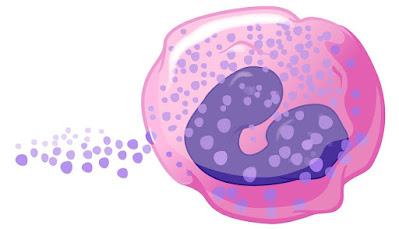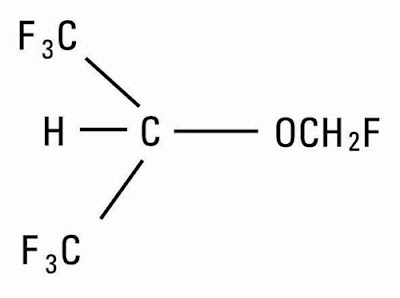A Persistent Immune System Illness of the esophagus is called Eosinophilic Esophagitis (EoE)
 |
| Eosinophilic Esophagitis |
Eosinophilic esophagitis (EoE) is a chronic immune/antigen-mediated esophageal disease characterized clinically by symptoms related to esophageal dysfunction and histologically by eosinophil-predominated inflammation.
What is Eosinophilic Esophagitis?
Eosinophilic esophagitis (EoE) is a chronic inflammatory condition of the
esophagus. It is characterized by the presence of high numbers of eosinophils
in multiple biopsy samples from the esophagus of patients who present with
symptoms of esophageal dysfunction. EoE causes inflammation and scarring in the
esophagus, which restricts the passage of food.
Symptoms of Eosinophilic Esophagitis
The most common symptoms of EoE include dysphagia (difficulty swallowing), food
impaction (feeling of something getting stuck in the throat or chest),
heartburn, chest pain, abdominal pain, vomiting and feeding difficulties in children
and infants. Several foods or food groups often worsen EoE symptoms and alter
the inflammatory response in the esophagus. The common triggers are dairy
products, eggs, nuts, soy, wheat and meats.
Causes of Eosinophilic Esophagitis
The exact cause of Eosinophilic
Esophagitis is unknown, but it is considered a chronic
immune/antigen-mediated disease. Genetics appears to play a role as people with
a family history are at higher risk. Environmental factors like certain foods,
allergens and acid reflux disease likely contribute to EoE development in
genetically predisposed individuals. EoE results from an inappropriate immune
response involving eosinophils to otherwise harmless antigens in the esophagus.
Diagnosis of Eosinophilic Esophagitis
EoE is diagnosed based on symptoms, medical history, endoscopy and biopsy of
the esophagus. During endoscopy, the esophagus may appear normal or have
visible features of inflammation and scarring. Targeted biopsies are taken and
assessed under a microscope. EoE is defined by >15 eosinophils in one high
power field of the esophagus. Other conditions need to be excluded through
testing before confirming an EoE diagnosis.
Treatment of Eosinophilic Esophagitis
The main goals of EoE treatment are to reduce symptoms, promote healing of the
esophagus and prevent long-term complications. Therapy focuses on eliminating
food triggers, using medications to reduce esophageal inflammation and dilating
the esophagus if strictures have formed.
Elimination diets: Identifying and avoiding the specific foods triggering
symptoms through an elimination diet is often the first-line treatment. A 2-6
food elimination diet guided by an allergist is effective in many cases.
Medications: Topical corticosteroids like fluticasone or swallowed budesonide
are commonly used to reduce esophageal inflammation. Other options include
acid-suppressing medications and rare cases may need immune-modifying drugs.
Dilation: As EoE causes scarring and strictures, endoscopic dilation can help
widening of the esophagus to improve swallowing in patients with food
impactions despite medical treatment. Serial dilations may be needed.
Prognosis and complications of
Eosinophilic Esophagitis
With proper long-term management, EoE prognosis is typically good in terms of
symptom control and prevention of esophageal complications. Left untreated, it
can lead to scarring, strictures and narrowing of the esophagus making
swallowing difficult or painful over time. This raises risk of food getting
lodged or in severe cases requiring feeding tubes. Risk of esophageal tearing
or perforation during swallowing also increases in advanced stages when
scarring is severe.
Eosinophilic Esophagitis in Children
EoE commonly presents in early childhood with feeding difficulties, poor
appetite and failure to thrive. Treatment principles are similar to adults
focusing on dietary changes, topical steroids and dilation if needed. Close
monitoring is important as rapid growth phase in children can worsen esophageal
damage if EoE remains active. Prompt diagnosis and treatment improves long-term
outcomes preventing growth issues and food aversion behaviors.
Raising Awareness of Eosinophilic
Esophagitis
As an emerging disease, awareness of EoE is growing among both medical
providers and the general public. Early recognition and management prevents
complications and improves quality of life for patients. National foundation
like American Partnership for Eosinophilic Disorders (APFED) play a vital role
in educating communities, advocating for research and connecting those affected
by this chronic condition. With multidisciplinary care and appropriate lifelong
therapy, people with EoE can stay symptom-free enabling normal daily activities
and nutrition.
Get More Insights on Eosinophilic Esophagitis



Comments
Post a Comment